Creating a kid’s room that is both functional and magical can seem like a daunting task, but with a few simple design tricks, you can turn any space into an inspiring and cozy environment for your little one. Whether you’re working with a tiny apartment or a larger home, the key is to focus on clean, uncluttered, and easy-to-maintain decor ideas that will spark imagination, provide comfort, and support growth.
Here’s how you can do just that with a minimalist approach to kids’ room decor.
1. Start with a Neutral Color Palette: The Foundation of a Timeless Room
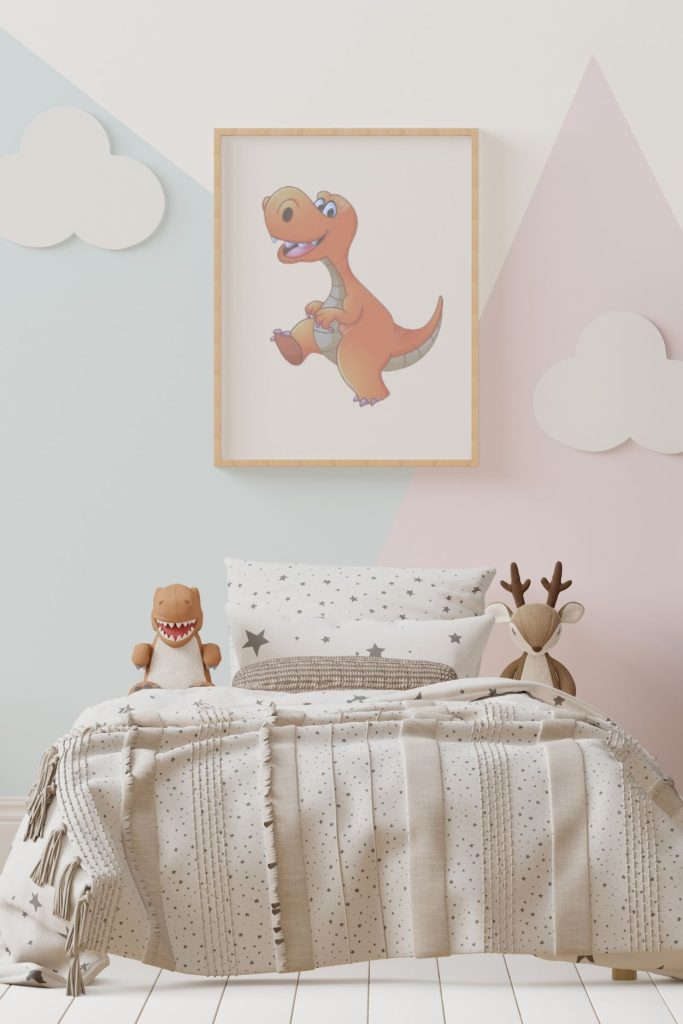
Choosing the right colors for your child’s room can have a big impact on the overall feel. Neutral tones such as soft whites, grays, and pastels set the perfect foundation. These colors create a calm and inviting atmosphere, which is especially important in a room designed for both play and rest.
Pro Tip: Start with a light, neutral color on the walls to create a serene base. This allows you to easily update or change the accents as your child’s tastes evolve without needing to repaint.
Placement Tip: Incorporate pops of color through playful accessories like colorful pillows, rugs, or artwork. These items are easy to swap out and can be changed as your child grows.
Expert Thought: Neutral tones offer a timeless quality, providing flexibility for years to come. As your child ages, you won’t need to redo the entire room when their interests shift — you can simply adjust the decor and accessories.
2. Fun and Functional Storage Solutions

One of the biggest challenges in kids’ rooms is keeping things tidy. With toys, books, and clothes piling up, it’s crucial to have functional storage solutions. The more organized the room, the more enjoyable and relaxing it will feel.
DIY Option: Turn old wooden crates into charming storage bins. With a coat of paint and some simple hardware, these can serve as toy boxes, shelves, or even a mini play kitchen setup.
Framing Tip: Opt for storage containers that are transparent or clearly labeled. This not only helps your child find what they need but also makes it easier for them to learn how to organize.
Expert Thought: Functional storage solutions like under-bed drawers, wall-mounted shelves, and floating cabinets ensure that even in small spaces, there’s always a place for everything. Keep the room feeling fresh and clutter-free, which in turn helps keep the mind organized.
3. Playful Furniture: The Heart of the Room
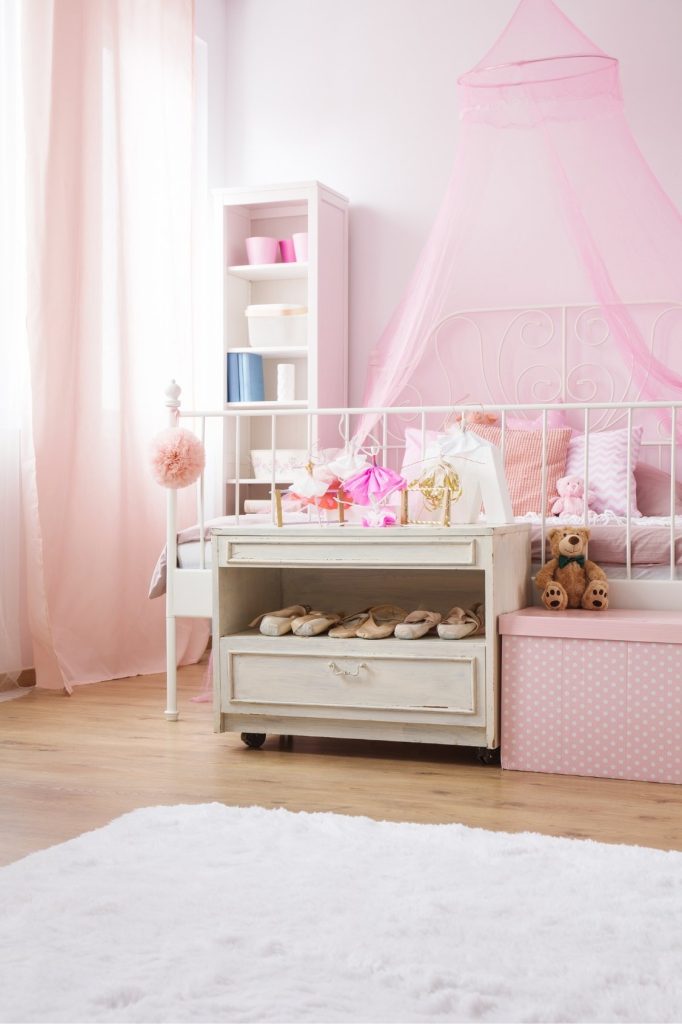
Furniture is where the magic happens. Whether it’s a quirky bed frame or a functional play table, the right furniture can elevate the look of the room while providing plenty of practical use.
Pro Tip: Invest in multifunctional furniture, like a bunk bed with a built-in desk or a toy chest that doubles as seating. This type of furniture is especially great for maximizing space in a smaller room.
Placement Tip: The arrangement of the furniture is key. Place the bed in a position where it feels cozy but still allows ample space for play. Try to keep the central area clear to provide space for activities.
DIY Option: If you’re handy with tools, consider creating custom furniture pieces such as a reading nook built into a corner or a desk that adjusts as your child grows.
4. Creating Defined Spaces: Zoning the Room
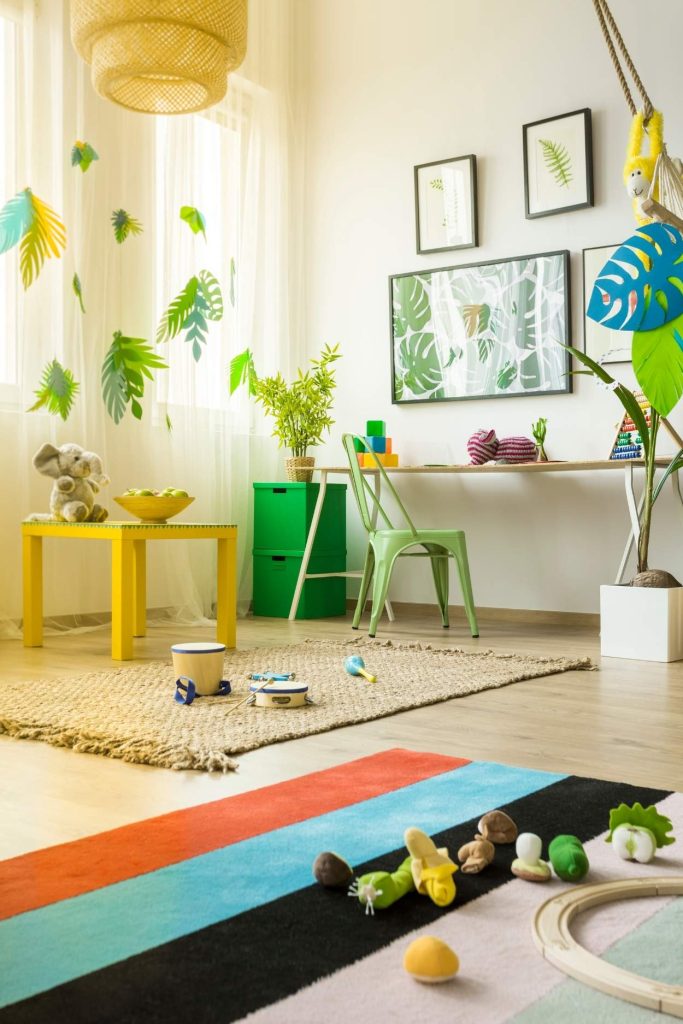
Even in small rooms, it’s possible to create distinct zones for sleeping, studying, and playing. This not only helps the child understand their space but also adds structure to the room.
Zoning Hack: Use rugs or curtains to define different areas. A large rug under the bed can anchor the sleeping area, while smaller rugs near the toy box can define the play zone.
DIY Option: Build a simple book nook or playhouse in a corner to give your child a space that feels truly their own. It’s a great way to define a play area without taking up too much space.
Framing Tip: The bed should ideally be placed near the window for natural light, but be mindful of the placement of other furniture to ensure the space flows well.
5. Personalizing the Room: Adding Character with Art and Decor
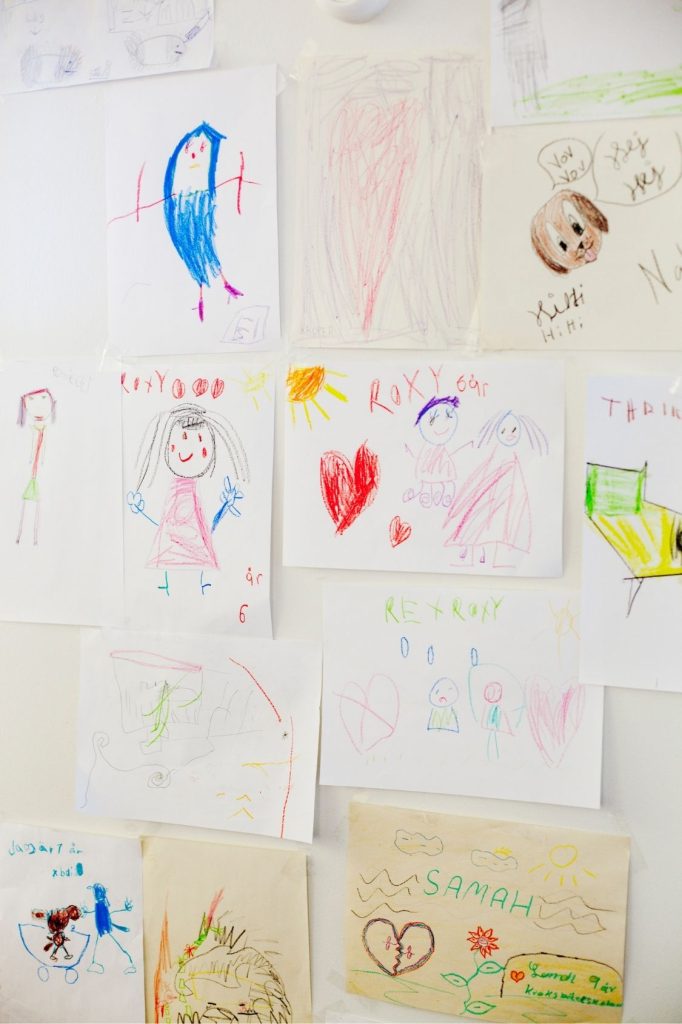
A child’s room is their sanctuary, so it’s essential to reflect their personality in the decor. Whether it’s through art, a themed room, or quirky decor items, personal touches make the room feel magical.
Pro Tip: Hang up a gallery wall of your child’s artwork or photographs. You can frame their drawings or create a DIY bulletin board where they can proudly display their creations.
Styling Tip: Choose art that reflects your child’s interests, like animals, outer space, or their favorite cartoon characters. This can also be a great opportunity to teach them about art and culture.
Expert Thought: Personalizing the room with their art helps foster their creativity and makes the room feel truly theirs.
6. Bringing Nature Indoors: Nature-Inspired Decor
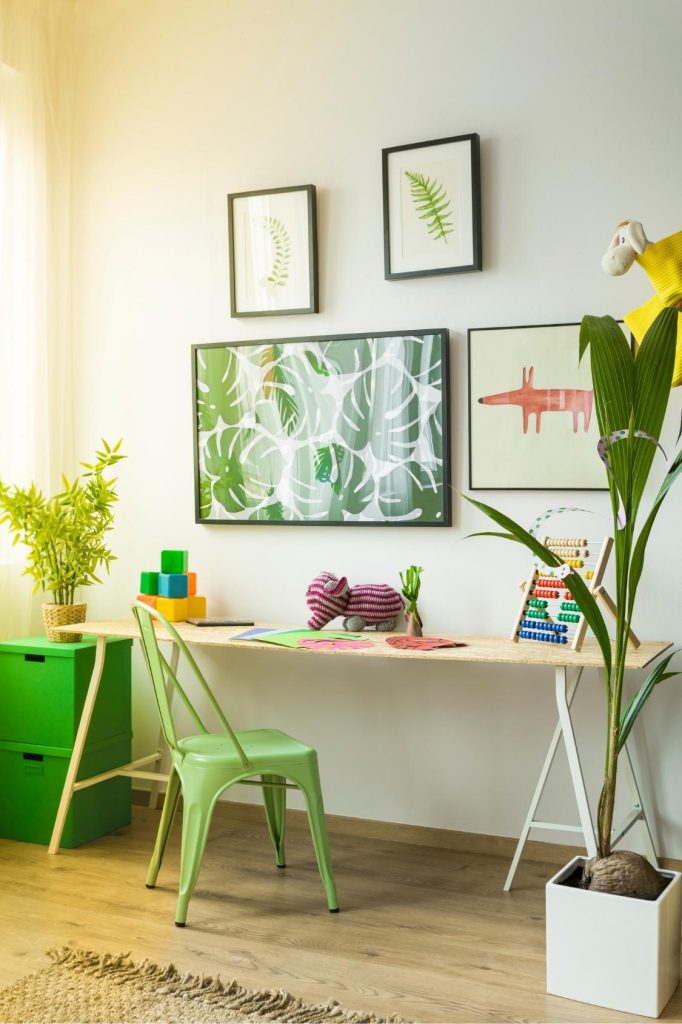
Incorporating natural elements into the decor can have a calming effect. Plants, wooden furniture, and nature-inspired accents create a warm and welcoming environment.
DIY Option: Craft simple wooden wall hangings, plant holders, or even a tree mural on the wall to bring the outdoors inside.
Expert Thought: Wooden furniture and natural textures (think woven baskets or woolen rugs) are perfect for creating a grounded, earthy aesthetic.
Placement Tip: Keep small potted plants out of reach of toddlers, but consider hanging plants or choosing large, low-maintenance options that are safe for kids.
7. Embracing Minimalism: Less is More
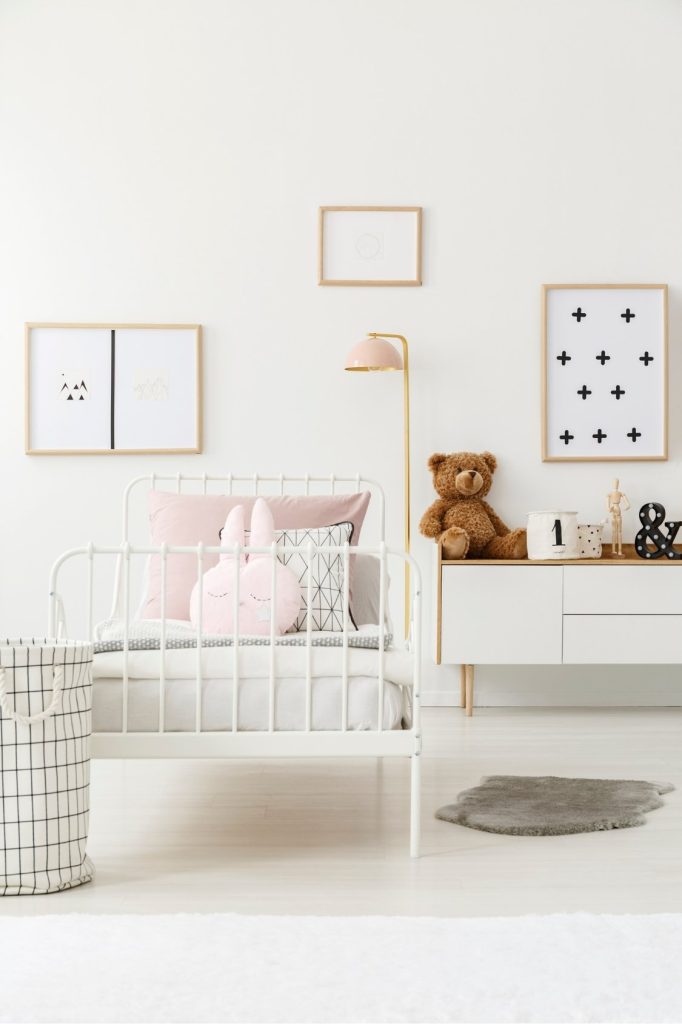
When designing a kids’ room, it’s easy to get carried away with trendy decor. But in reality, the less clutter there is, the better. Minimalism not only makes the room feel more spacious but also allows the child’s imagination to take center stage.
Pro Tip: Keep only what is necessary. Focus on quality over quantity and add functional pieces that will be used daily, rather than ornamental ones that just take up space.
Expert Thought: A minimalist design doesn’t have to be boring. Play with textures, use fun shapes, and add subtle pops of color to create interest without overwhelming the space.
Conclusion: A Magical, Functional Room for Your Child
Designing a kid’s room doesn’t need to be an overwhelming task. With a little planning, you can create a space that is not only visually appealing but also promotes creativity, comfort, and functionality. Minimalist design, smart storage solutions, and personal touches can all work together to transform your child’s room into a magical haven.
So go ahead, make these easy decor changes and watch the magic unfold!

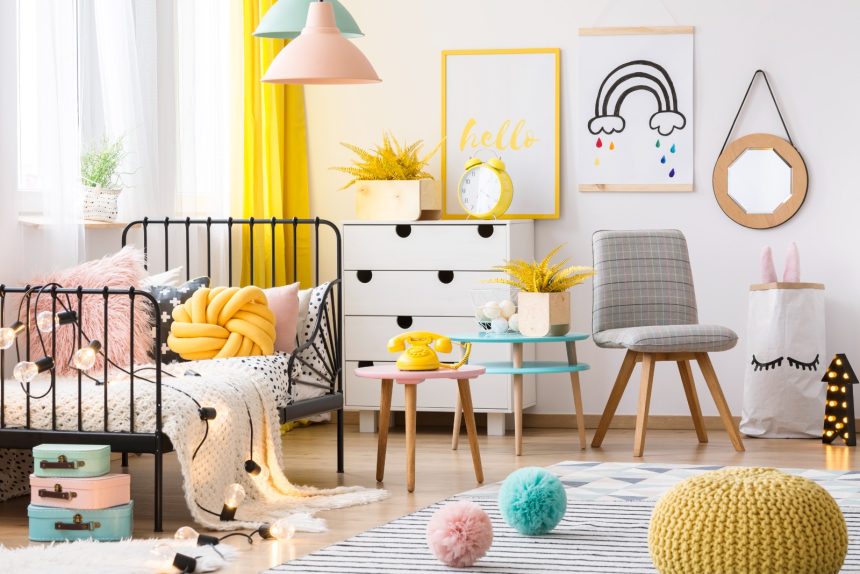
Leave a Reply